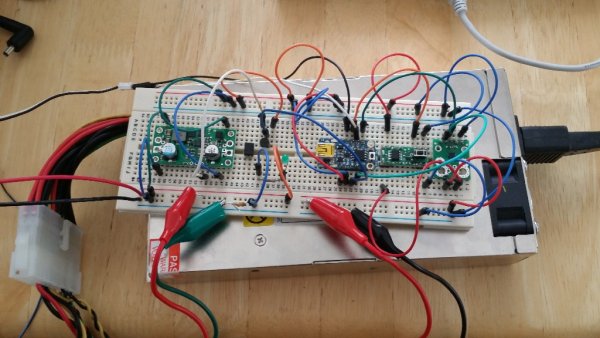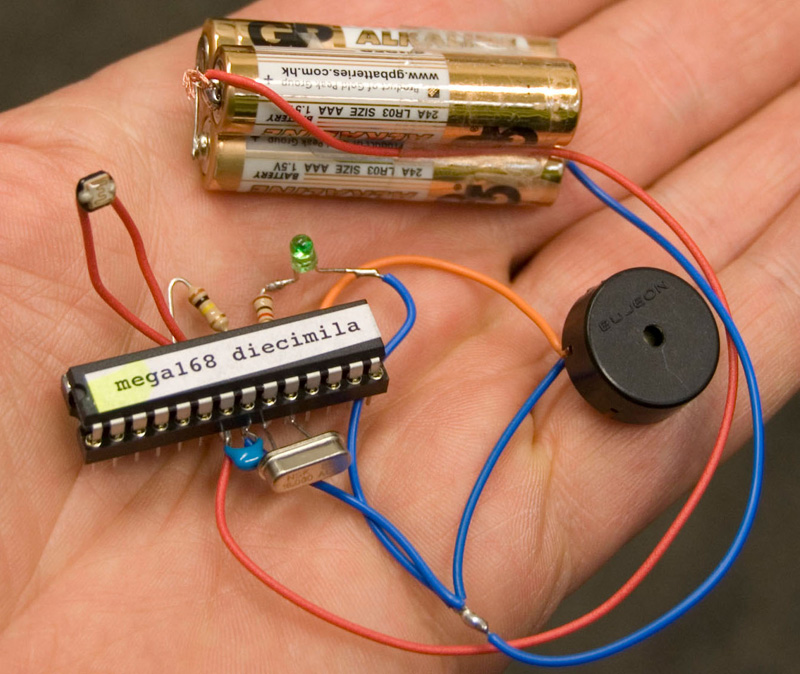


This loads the I2C kernel modules and optionally sets the baud rate to the given speed in Kb/sec (multiples of 1000).

The /dev/spi* entries are set to be owned by the person using the gpio program, so there is no need to run subsequent programs as root (unless they use other wiringPi functions) The default is 4KB and is usually more than enough for most application which only exchange a byte or 2 at a time over the SPI bus. This loads the SPI kernel modules and optionally sets the internal buffer to the given size in KB (multiples of 1024). This reads all the normally accessible pins and prints a table of their numbers (both wiringPi and BCM_GPIO, so makes for a handy cross-reference chart), along with their modes and current values.

Reads and prints the logic value of the given pin. Set the pin to a PWM value (0-1023 is supported) This sets an output pin to high (1) or low (0) This sets the mode of a pin to be input, output or pwm and additionally can set the internal pull-up/down resistors to pull-up, pull-down or none. The optional -g flag causes pin numbers to be interpreted as BCM_GPIO pin numbers rather than standard wiringPi pin numbers. See the man page for the gpio program to see what all the features are by typing man gpio
Determine your Raspberry Pi board hardware revision. Set the SPI buffer size and I2C baud rate (when loading the modules). Load SPI and I2C modules and set /dev/ permissions to enable read/write by the user running the gpio program. Control the pins on the PiFace peripheral device. Export pins to enable edge-triggered interrupts via the /sys/class/gpio interface. Export/Unexport pins via the /sys/class/gpio interface, where they will then be available to user programs (that then do not need to be run as root or with sudo). In addition to using the gpio utility to control the GPIO pins, you can: The gpio command is designed to be installed as a setuid program and called by a normal user without using the sudo command (or logging in as root). It’s even possible to write entire programs just using the gpio command in a shell-script, although it’s not terribly efficient doing it that way… Another way to call it is using the system() function in C/C++ or it’s equivalent in other programming languages. This program, called gpio, can also be used in scripts to manipulate the GPIO pins – set outputs and read inputs. Run the above on your RPi when it has lost the connection, and see in the output (might take several seconds to be displayed) if there is your wifi network name.WiringPi comes with a separate program to help manage the GPIO. When you have the WiFi up and running, what are the output of iw wlan0 link and iw wlan0 station dump? Then once the wifi is lost, what are the output of both commands?Īnd once you have lost wifi, are you still able to view your wifi network? sudo iw wlan0 scan | less Tx excessive retries:1 Invalid misc:0 Missed beacon:0 Rx invalid nwid:0 Rx invalid crypt:0 Rx invalid frag:0 Retry short limit:7 RTS thr:off Fragment thr:off # In order to enable or disable this script just change the executionĪfter saving this small change, we can reboot the device to check the Power Management status will be to off by using iwconfig command: # iwconfig # Make sure that the script will "exit 0" on success or any other # This script is executed at the end of each multiuser runlevel. To be sure that, after each reboot of the Raspberry Pi, it will does not let WiFi module to go on sleep after a while, we can modify the /etc/rc.local file (with root access or by using sudo) in the following way (basically adding the above command in the last part of the file): # sudo nano /etc/rc.local To prevent Wifi to go on sleeping mode on a Raspberry Pi 4 we can just issue the following command (if our WiFi network module is seen in Linux as wlan0, and usually it will be wlan0 if you will use the embedded module on the device), but take not that : iwconfig wlan0 power off This is quite useful if you establish, for example, a server role on Raspberry Pi 4 and the only connection used, in a LAN environment, is by using WiFi technology and not wired Ethernet. Raspberry pi sleep mode how to#
The following small article will show how to prevent, also after a reboot, to have the WiFi connection in sleeping mode after a while on Raspberry Pi 4.








 0 kommentar(er)
0 kommentar(er)
